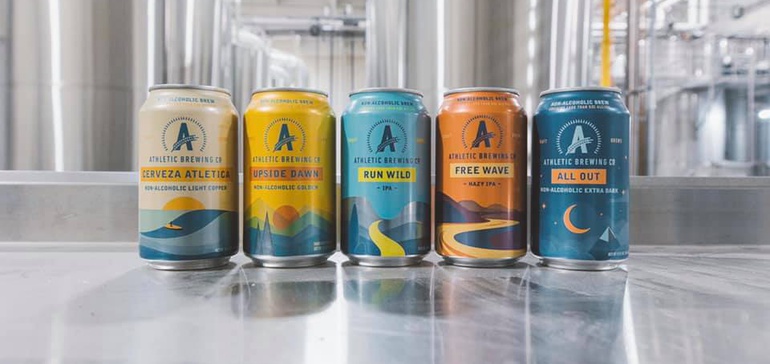A third of consumers plan to avoid alcohol this holiday season, survey finds

Dive Brief:
- A third of consumers plan to avoid alcohol this holiday season, according to results of a survey by Catalina of more than 1,100 U.S. adults aged 18 and older.
- The survey also found 37% plan to drink the same amount of alcohol as they did during last year’s holiday season, while 15% plan to consume as much or more and another 15% said they plan to curtail their alcohol intake.
- The move by many consumers to reduce their alcohol consumption has prompted large beer makers and smaller upstarts to flood the marketplace with several low- and no-alcohol products.
Dive Insight:
While consumers once looked down upon skipping alcohol and mocked the products on store shelves, for many people it’s now the trendy thing to do.
The fact that about half of Americans plan to skip alcohol or drink less of it, according to the Catalina study, provides insight into why so many low- and no-alcohol brews have suddenly been rolled out.
Boston Beer launched a nonalcoholic Samuel Adams beer called Just the Haze that is said to taste like a traditional IPA. Guinness has a nonalcoholic version of its stout called 0.0.
Budweiser introduced its first nonalcoholic beer called Budweiser Zero in July 2020. Parent company AB InBev announced plans to convert at least 20% of its global beer volume to low- and no-alcohol products by 2025. Heineken launched 0.0 in 2017 and offers a January Dry Pack of 31 cans of nonalcoholic beer. And upstart Athletic Brewing is raising millions of dollars to build a new manufacturing facility in an effort to meet surging demand.
“What [beer companies] are doing is answering consumer demand, quite honestly,” Scott Scanlon, an executive at IRI, said last year. “It’s less about the nonalcoholic nature and more about the healthier lifestyles that they are reacting to.”
As more people gather this season together, a growing number of them want to avoid a hangover. Still others want to cut their calorie and sugar consumption as they look to be healthier, a trend that has gained momentum during the ongoing pandemic. And more people want to enjoy a beer at work or during their lunch break without the buzz.
In recent years, the phrase Dry January rose in popularity as the calendar turned, but there are signs it’s spreading to other parts of the year. Sober October and No Alcohol November have entered the lexicon, too, and the latest Catalina data could indicate the gap between November and January is filling in with more people who want to avoid alcohol. Figures from Nielsen in 2019 noted 66% of millennials said they’re making efforts to reduce their alcohol consumption.
The nonalcoholic beer market generated just over 0.5% of beer sales in 2020, up from 0.3% two years earlier, according to data provided by the Beverage Marketing Corporation. Its pace of growth is expected to gain momentum with market share for nonalcoholic beers tripling to between 1.5% and 2% by 2024.
Source: fooddive.com

